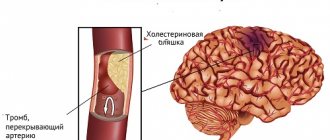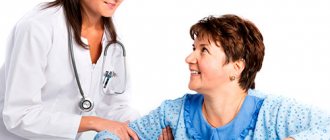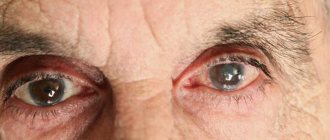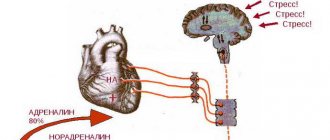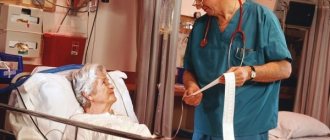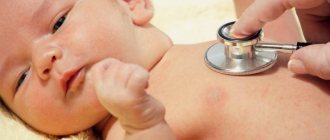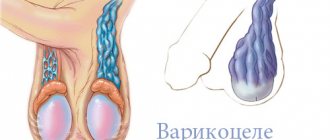Age is one of the significant factors in the development of acute vascular pathologies of the brain that impair blood circulation. Diseases of the blood vessels in older people are much more severe than in young people. This is due to physiological changes in the body, and in particular in the central nervous system, such as:
- reduction in brain volume and weight;
- thinning of the leptomeningeal membranes;
- senile neuronal atrophy;
- degenerative changes in white matter;
- decreased functional activity of neurons;
- neuronal death caused by electrolyte imbalance;
- reduction of the blood-brain barrier;
- pathological changes in the cerebral ventricles.
About 80% of stroke cases are diagnosed in people over 70 years of age. And, unfortunately, the prognosis for recovery is very often unfavorable. The consequences of stroke in older people are difficult to predict, since it is difficult for such patients to choose effective therapy. However, it should be recognized that their chances of full recovery are extremely low. In addition, the likelihood of repeated hemorrhages is very high.
Causes of stroke in older people
Among the causes of stroke in older people, etiological factors and risk factors are distinguished. The former cause the disease itself, while the latter increase the likelihood of pathology occurring. The main causes of acute disorders of blood flow in the brain include:
- arterial hypertension;
- vasculitis and angiopathy;
- improper use of drugs that affect blood clotting;
- neoplasms in the cells of nerve or connective tissues;
- changes in heart rate;
- atherosclerosis of the carotid arteries;
- hormonal imbalance, which increases the risk of blood clots.
The main risk factors for stroke in older people include:
- gender (statistically, men are more susceptible to extensive bleeding into the brain);
- presence of cardiovascular diseases;
- increased cholesterol levels in the blood;
- history of micro-strokes.
Prevention of cerebrovascular diseases involves eliminating the above-mentioned factors. Early initiation of therapy also plays an important role. But diagnosing stroke in older people is often difficult because the clinical picture is unclear in some patients.
As a rule, a stroke is preceded by certain vascular and cardiac diseases. Some of them are systemic atherosclerosis and atrial fibrillation, which develop at the age of 85 years.
Expert opinion
Author: Vladimir Vladimirovich Zakharov
Neurologist, Doctor of Medical Sciences, Professor, Head of the Center for Diagnostics and Treatment of Memory Disorders
According to statistics provided by WHO, stroke ranks third in prevalence among all neurological diseases. Doctors note an annual increase in incidence. In Russia, 400 thousand new cases of stroke are registered every year. More than 30% of them are fatal. Acute cerebrovascular accident is not a disease characteristic of older people. The disease can be diagnosed in 5-year-old children. A distinctive feature of old age is considered to be a greater number of factors predisposing to the development of stroke.
At the Yusupov Hospital, diagnosis of cerebrovascular accidents is carried out using modern medical equipment. CT and MRI make it possible to assess the size of the pathological lesion, its location, and the type of stroke. Treatment is developed individually for each patient. The drugs used meet quality and safety standards. If necessary, surgical intervention is performed. During the rehabilitation period, each patient is prescribed a course of physiotherapy and a complex of physical therapy. Experienced massage therapists work the muscles, helping to restore lost functions.
Ischemic cerebral stroke in old age: prognosis and life expectancy
HomeStrokeConsequences of stroke Ischemic cerebral stroke in old age: prognosis and life expectancy
Older people are at risk of developing diseases of the cardiovascular system, in which there is a blockage of the arteries and veins that supply the brain. As a result, their spasm is observed, which leads to a brain stroke.
The pathology manifests itself with severe symptoms and is always accompanied by severe complications.
Older people are at risk of developing diseases of the cardiovascular system, in which there is a blockage of the arteries and veins that supply the brain. As a result, their spasm is observed, which leads to a brain stroke.
Age-related features of the disease
A stroke and its consequences for a 30-year-old patient and a 65-year-old will be slightly different:
- First of all, the course of the disease itself. The rate of damage to brain tissue in old age is much higher; the course of the disease is more severe and especially life-threatening. The likelihood of death increases to 90 percent after age 65.
- In older patients, the likelihood of full recovery after an attack is reduced, and the prognosis of the disease is less optimistic. In addition, older people often do not want to see a doctor or complain to relatives about being unwell. This leads to the fact that treatment of the disease is complicated.
- Elderly patients are often diagnosed with ischemic stroke, while the age group from 45 to 60 years is characterized by a hemorrhagic type.
The most common cause of ischemic stroke in elderly patients is atherosclerosis of blood vessels, on the inner surface of which atherosclerotic plaques form.
They impede blood flow, gradually the vessel narrows, thrombosis may develop and a blood clot may enter the brain. The formation of blood clots in the heart cavity during atrial fibrillation also leads to the same result.
Vascular atherosclerosis leads to frequent micro-strokes in old age. The consequences of such attacks are usually mild, but if left untreated within a year they can lead to a major stroke.
If the following symptoms of a microstroke appear, contacting a doctor becomes vitally important:
- Numbness or complete paralysis of one side of the body. It could be half of the face, an arm or a leg.
- Speech becomes unintelligible to others.
- Frequent dizziness leads to loss of orientation in space.
- Deterioration of vision.
Depending on the location of the intracranial hemorrhage, a person may lose vision or hearing. In severe forms of cerebral infarction, symptoms such as seizures and the onset of coma may be observed.
Formation of bedsores
It is observed in paralyzed patients due to prolonged stay in one position. In this case, less nutrients reach the tissues. The result is their starvation and further death. The areas most affected are areas closely pressed to the bed.
falling into unconsciousness;
Causes of stroke in older people
Now let's talk about the causes of stroke in older people. The following reasons are usually identified:
- Arterial hypertension, in simple terms, is persistently elevated blood pressure. More than half of older people suffer from this disease. Hypertension is very difficult to treat and often leads to ischemic heart attacks.
- Increased cholesterol levels in the blood. It was already said above that cholesterol leads to blockage of blood vessels, thereby causing atherothrombotic stroke.
- Arrhythmia is also a precursor to a stroke. The fact is that due to arrhythmia, blood flow is disrupted and the likelihood of blood clots entering the brain increases.
- Overweight. It's no secret that excess weight puts additional stress on the heart.
- Previous heart attack.
- Gender also influences susceptibility to stroke. Women are predisposed to stroke before the age of eighty, and men - after eighty-two.
- Self-medication or unauthorized taking of medications.
- Stress leading to heart disease.
- Inactive lifestyle.
- Diabetes.
- Bad habits.
The more factors you check, the greater your risk of stroke and death.
So, knowing the symptoms of a stroke, you can provide first aid in a timely manner. First of all, you need to call an ambulance (03 or 112). Before doctors arrive, you can alleviate the victim’s condition by doing the following:
Risk of re-strike
The likelihood of a recurrent stroke, especially in old age, is very high. It is sometimes impossible to recover from it. The attack is provoked by the following factors:
- oxygen starvation;
- hypertension;
- decreased vascular tone;
- associated diseases.
After the first attack, it is necessary to undergo an examination to determine the presence of aneurysms. The latter grow into the walls of blood vessels and look like capsules. If they rupture, cerebral edema develops. The speed of blood flow is reduced by plaques. A jump in blood pressure leads to the development of a primary stroke.
The consequences themselves can be severe. We are talking about paralysis of the entire body, loss of consciousness and speech, hearing, and vision. Mental disorders cannot be ruled out.
Important! It is better to prevent relapse than to deal with its consequences later.
According to statistical information, an elderly person after a stroke can live no more than 10 years. However, in some cases death occurs immediately. The number of years lived depends on the type of stroke, as well as on the number of attacks.
Causes of the disease
Experts believe that a stroke can occur in anyone, regardless of age, but the likelihood of it happening is much higher in people over 60 years of age. This is due to the fact that they are much more likely to suffer from diseases that cause problems with blood vessels. In general, the causes of stroke in older people are similar to other age categories. These include:
- pathologies of the cardiovascular system. First of all, these include hypertension, since most people after 50 years have high blood pressure,
- disorders of the endocrine system (diabetes, obesity),
- infectious diseases in severe form. Most diseases of this type negatively affect the elasticity of the arteries, which is accompanied by tissue destruction,
- disturbance of the normal rhythm of the heart (atrial fibrillation),
- malignant tumors localized in the brain,
- diseases of the joints and muscles (for example, rheumatism),
- high blood cholesterol levels. This affects the formation of blood clots in the vessels.
Important! The risk group includes people leading a sedentary lifestyle.
Experts believe that a stroke can occur in anyone, regardless of age, but the likelihood of it happening is much higher in people over 60 years of age. This is due to the fact that they are much more likely to suffer from diseases that cause problems with blood vessels. In general, the causes of stroke in older people are similar to other age categories. These include:
Possible consequences and complications
Consequences of a stroke occurring in the left hemisphere of the brain:
- The patient becomes unable to pronounce long phrases. But at the same time he retains mental abilities and understands speech.
- Sensitivity on the right side is impaired - the patient cannot move his fingers and limbs. Depending on the severity of the lesion, motor activity is partially or completely reduced.
Consequences of a stroke that occurs in the right hemisphere of the brain:
- Sensation is lost on the left side.
- Right-sided flattening of the nasolabial folds develops, resulting in deformation of the face.
- The corners of the mouth droop.
- Breathing during sleep becomes “sailing”.
- Impaired coordination of movements.
- Inability to distinguish the size of objects.
- The patient is unable to remember what happened recently, but remembers events of past years clearly.
Possible consequences during rehabilitation measures:
- The patient has difficulty concentrating.
- The mood often changes, from laughter to sudden depression.
- There is stupidity in behavior - there is no sense of tact and moderation in conversation.
Complications after stroke in old age:
- partial or complete paralysis;
- paresis of limbs (muteness);
- impaired coordination of movements and speech;
- complete or partial deafness and blindness;
- difficulties with swallowing reflexes;
- mental disorders;
- disturbances in the processes of urination and defecation;
- coma;
- heart attack;
- death.
- The patient has difficulty concentrating.
- The mood often changes, from laughter to sudden depression.
- There is stupidity in behavior - there is no sense of tact and moderation in conversation.
Swallowing dysfunction
The consequences of stroke in old age in women and men also include impaired swallowing function. This occurs due to a failure of the reflex process or paralysis of the facial muscles. In some cases, swallowing is impaired when the brainstem is affected.
The failure manifests itself in different ways:
- Difficulty chewing food.
- Difficulty swallowing food.
- Pain when passing food.
- Penetration of food from the mouth into the nose and respiratory organs.
Features of feeding when the patient’s swallowing reflex is impaired are that they are fed first with the help of special devices. Then the patient learns to eat on his own. First, liquid food is given, then gradually more solid foods are introduced.
- Difficulty chewing food.
- Difficulty swallowing food.
- Pain when passing food.
- Penetration of food from the mouth into the nose and respiratory organs.
Briefly about the consequences for different types
Let's consider the likely consequences of the disease and further prognosis for various types of ischemic stroke, in particular with damage to the left and right hemispheres of the brain, as well as with extensive stroke.
- paralysis and paresis of the left limbs;
- hypoesthesia – loss of sensitivity in the left half of the body;
- mental disorders;
- vision problems;
- amnesia.
Where does it hurt?
[7], [8], [9], [10]
Frequent atrial fibrillation after 85 years
Heart rhythm disturbances that lead to an irregular heartbeat indicate the presence of atrial fibrillation. The sinus node cannot cope with the coordination of the heart rhythm, which is why the upper chambers flicker chaotically. As a result, insufficient blood enters the ventricles. The main symptoms of atrial fibrillation are:
- trembling in the chest;
- cardiopalmus;
- irregular heart rhythm;
- dyspnea;
- pain in the chest;
- dizziness;
- fatigue, drowsiness;
- increased anxiety and restlessness.
Many people live with this disease for decades. It is not a direct threat to life, but when a person reaches old age it leads to a number of complications, including stroke. Atrial fibrillation is characterized by irregular contractions of the atria, causing blood flow to slow. The result is a blood clot that can travel to the brain and block an artery. The risk of stroke is five times higher in older people with atrial fibrillation.
What types of stroke do older people suffer from?
Based on the form and manifestation of a specific pathological process, strokes of hemorrhagic and ischemic nature are diagnosed in people over 70 years of age. Cerebrovascular accidents in most cases lead to ischemic pathologies. The consequences of the disease in the elderly are very severe, and the prognosis for survival after hemorrhagic stroke for elderly patients is extremely unfavorable.
Ischemic stroke
Vascular accidents of the ischemic type are insufficient blood supply to tissues, arising from a difficult or complete cessation of the flow of arterial blood to certain parts of the brain. That is, the cause of ischemic stroke is blockage of an artery by a blood clot. A detached atherosclerotic plaque also leads to vessel rupture. In addition, a previous myocardial infarction can also trigger an ischemic stroke.
Hemorrhagic stroke
The hemorrhagic form of the disease involves bleeding into the white matter of the brain or under its membranes. The mechanism of the disease is associated with sudden surges in pressure. The walls of the vessel cannot cope with the shock wave and rupture, which leads to the formation of a hematoma. The tumor compresses the nerve tissue, which is why the damaged area of the brain cannot function normally.
It is after a hemorrhagic stroke that elderly patients more often develop coma, the consequences of which are very unpredictable. An extensive form of ischemic cerebral stroke may also be accompanied by coma.
How it manifests itself
With a stroke in old age, the hemorrhage does not occur violently, so early symptoms may not be noticed immediately due to their mild severity. At the beginning of the process, blood composition and body temperature in most cases do not change. Hemorrhagic stroke can be recognized by hemorrhage in the fundus of the eye, and examination of the cerebrospinal fluid reveals an admixture of blood in the cerebrospinal fluid.
Symptoms of stroke in older women:
- the first sign of cerebrovascular accident is a sudden severe headache on one side of the head, which is combined with nausea and vomiting;
- blurred vision occurs, double vision appears, the person cannot focus his gaze;
- the face turns red;
- with a brain stroke, weakness of the limbs on the right or left side appears;
- the face distorts when trying to smile or open the mouth;
- a sharp rise in pressure;
- increased heart rate;
- semi-fainting state, with clouding of consciousness occurring;
- the person cannot swallow liquid freely;
- coordination of movements and orientation in space are impaired.
Signs of stroke in elderly women may vary, but if they are detected, it is necessary to hospitalize the patient in time to provide assistance and prevent the development of irreversible consequences that can lead to disability or death.
The first symptoms in women should not be ignored by family and friends. After 60 years, poor circulation in the brain can be unpredictable. The following persistent signs of stroke are possible:
- paralysis of the body on the right or left side, immobility of the facial muscles;
- tingling appears in the arm or leg, skin sensitivity is impaired, and numbness appears in some areas;
- memory lapses occur;
- the patient has difficulty pronouncing words, speech skills are completely lost;
- the woman cannot move her arm or leg;
If the hemorrhage occurs in the left hemisphere, then the patient loses the ability to think, does not orient herself in the room, performs unconscious movements, and cannot recognize family and friends. She cannot hold the glass in her hand or make small movements.
Stroke in people over 70 years of age
With age, cerebral circulation deteriorates. These disorders are explained by natural aging changes, due to which the body's compensatory reserves decrease. As a result, the walls of blood vessels become brittle, the inner lining of the arteries is affected by atherosclerotic plaques, and cases of sudden jumps in blood pressure become more frequent. In addition, the functioning of the heart is disrupted and the sensitivity of the nervous tissue to ischemia increases. All this leads to the fact that the disease actively involves healthy brain areas in the pathological process.
The consequences of a stroke in elderly patients (over 70 years of age) are very life-threatening and radically change it. The first episode of cerebral vessel rupture leads to coma in more than half of the cases. The recovery process after an acute cerebral circulatory disorder is difficult and lengthy. Even timely and correctly selected rehabilitation measures do not guarantee the return of lost functions. Very often, elderly patients who have suffered a stroke remain disabled for the rest of their lives.
The main cause of mortality is also the delay in the provision of medical care, since older patients are difficult to transport to the hospital.
Forecast
Doctors note that women have a more difficult time experiencing strokes even in their youth, and the clinical picture of the consequences is more varied. Therefore, recovery takes longer than for men, up to two years. Full recovery after an attack is achieved in 80% of women under the age of 35, and in 60% of women after 40 years. Lethal outcome, coma occurs only in 40% of women, subject to long-term failure to provide medical care, extensive bleeding in the brain.
Much of the success of recovery depends on the patient's age, area of injury, type of stroke, and speed of medical care. But rehabilitation allows almost 70% of patients to return to normal life.
What determines the severity of the consequences? Watch the video.
Stroke in women often leads to negative consequences. According to statistics, only 20% of stroke survivors fully recover.
The remaining patients, at best, remain disabled, and at worst, die either after the first signs of the disease or several months after the attack.
Signs of stroke in older people
In most cases, the disease manifests itself almost immediately. Deprived of normal blood supply, brain cells die, which is accompanied by the following symptoms:
- severe headache;
- dizziness;
- fainting, short-term loss of consciousness;
- impaired coordination of movements;
- deterioration of speech and pronunciation (slowness, deterioration of diction, inability to reproduce sounds);
- decreased vision, darkening of the eyes, blurred and unclear images;
- confusion, absent-mindedness;
- disorientation in space.
Signs of stroke in older people have some peculiarities. A vascular accident in the brain occurs regardless of the time of day, but more often develops in the early morning or evening. In older patients, the condition often worsens gradually over several days. This is due to the fact that cerebral hemorrhage occurs quite slowly. Manifestations of stroke in people over 70 years of age have a wave-like tendency - symptoms either increase or decrease. However, in the case of the embolic ischemic form, rupture can occur instantly, and neuralgic symptoms will manifest themselves as clearly as possible.
Who's at risk
Factors in the occurrence of stroke include not only smoking or alcohol.
In addition to these, factors include:
- Use of narcotic drugs.
- Atherosclerosis of cerebral vessels.
- Frequent stress.
- Myocardial infarction.
- Hypertension.
- Atherosclerosis.
- Postponed heart surgery.
- High blood pressure.
- Aneurysm of a cerebral artery.
Even such simple things as a heavy meal, hot summer, a hot bath or a sudden rise from bed can cause a stroke in a person.
Stroke in older people is more severe. Pathology can develop if a person has the following problems:
- rheumatism develops;
- vasculitis of various etiologies;
- diabetes;
- aneurysm of the aorta and cerebral vessels;
- blood problems, including aplastic anemia, leukemia, thrombocytopenic purpura;
- acute infections;
- poisoning by combustion products;
- previous myocardial infarction;
- systematic smoking and drinking alcoholic beverages;
- increased cholesterol levels in the blood (critical indicator - above 5.5 mmol/l);
- problems with blood clotting;
- constant stress leading to nervous breakdowns;
- previous cerebral stroke;
- eating salt in large quantities.
The main cause of stroke in the elderly is high blood pressure, which develops as a result of problems with blood vessels and kidneys, and disorders of the endocrine system.
If among young and middle-aged people the risk of developing stroke in men is 30% higher than in women, then after 60 years the disease develops regardless of gender.
Treatment of stroke in older people
The most effective therapy for older patients is thrombolytic therapy. Endovascular methods of treating stroke have also shown good results. For elderly patients, doctors also prescribe intra-arterial thrombolysis. These techniques can significantly reduce the negative consequences of a stroke.
Antiplatelet drugs are also often used. In the first hours of a stroke, elderly patients are recommended to take aspirin. This reduces the risk of further development of paroxysms.
Consequences of stroke in the elderly
Brain damage of both ischemic and hemorrhagic types entails severe complications. Many patients over 70 years of age cannot get rid of acquired disorders and restore lost functions until the end of their lives.
The severity of post-stroke conditions depends on:
- localization of damage;
- volume of hemorrhage.
If we are talking about elderly patients, then in any case the consequences will be significant. Many patients between 70 and 85 years of age are at risk of disabilities associated with motor and cognitive disorders:
- partial or complete paralysis;
- severe impairment of fine motor skills;
- worsening swallowing or complete inability to swallow;
- memory loss or decline;
- disorientation in time and space;
- dementia, decreased mental abilities;
- inability to read, write and speak.
The consequences of stroke in older people are persistent. They affect more than half of patients who suffer from a ruptured vessel in the brain. Patients become completely dependent on others due to the fact that they cannot care for themselves. There are also problems with socialization, since it is very difficult to contact even the closest people.
Consequences and what are the chances of survival
The chances of surviving a stroke and recovering will be in the following cases:
- the hematoma in the brain tissue, formed as a result of hemorrhage, is small in size, and this was confirmed by examination;
- during the first 5 days after the stroke the person did not lose consciousness;
- no problems with the functioning of the cardiovascular system;
- There are no surges in blood pressure, it remains normal.
A stroke after 80 years of age gives a disappointing prognosis. Recovery is slow and depends on which hemisphere of the brain is affected.
If a person’s right side is paralyzed, this means that the hemorrhage occurred in the left hemisphere. With a stroke on the right side, the prognosis is favorable due to the fact that the diagnosis is made faster and treatment begins immediately. The pathology can be determined by the main symptom: in this case, speech function is impaired.
With a lesion in the right hemisphere, the left side of the body is completely or partially paralyzed. In this case, the functioning of some internal organs may be disrupted. A stroke on the left side is manifested by the following symptoms:
- paralysis of the left eye or loss of vision occurs;
- hearing is impaired partially or completely;
- the left arm and leg are completely or partially immobilized, the person cannot estimate the distance from the arm to any object;
- there is a change in facial expression, because many facial muscles are paralyzed;
- manifestation of aggression, depression, inappropriate behavior;
- the patient does not distinguish colors and shades.
Damage to the central part of the brain leads to complete paralysis of the limbs. When hemorrhaging in the parietal part, a disturbance in the perception of heat and cold occurs, the patient may not feel pain.
How long you live after a stroke depends on its type. Patients tolerate ischemic attacks more easily, after which the chance of survival is 75%.
Hemorrhagic stroke is more dangerous in old age. 65% of victims cannot survive after it, even with timely assistance. Already in the first month after hemorrhage, the mortality rate is 20-25%. The reason for this is the complications that occur after an attack. In most cases, cerebral edema, pneumonia develops, and problems with the heart and kidneys worsen.
Important information: Is it possible to drink alcohol (alcohol) after a stroke and what are the consequences of drinking it?
After the first attack, a person has a greater chance of surviving and recovering as much as possible than after the second attack.
Rehabilitation of elderly people after stroke
It is important to understand that the disease in people after 70 and 80 years of age is extremely severe, and the prognosis for life can hardly be called optimistic. If death has been avoided, stroke survivors require care and constant assistance from doctors and loved ones.
Rehabilitation measures for elderly patients should be taken during the acute period of a stroke. The patient is placed in the neuroreanimation department. Rehabilitation measures are complex. Impacts are selected depending on the form of stroke:
- When ischemic vascular rupture develops, reperfusion therapy is prescribed. It represents both mechanical or medicinal treatment, and a combination of these techniques. Aimed at restoring blood flow in a blocked vessel.
- For hemorrhagic stroke, treatment is carried out with hemostatic agents and drugs that lower blood pressure. In case of extensive cerebral hemorrhage, surgical intervention is resorted to. As a result of the operation, blood clots are removed, thereby reducing the size of the hematoma.
Once a patient leaves the intensive care unit, they face a long rehabilitation process. Care for an elderly patient after a stroke depends on the clinical picture of the disease. General recommendations include bed rest (with the bed elevated in the head area), regular wiping of the skin and systematic changes in the patient’s body position (every 3 hours).
Rehabilitation of older people after a stroke includes the use of techniques, training and exercises to restore motor and speech function. Psychological assistance also plays an important role. Psychotherapists and teachers are assigned to the patient, conducting conversations and consultations with him.
Rehabilitation measures are complemented by drug therapy, physical procedures and a special diet. The patient must limit himself to salty and fatty foods, animal products and sweets. The cooking technology is also changing - boiled or steamed food is recommended. Alcohol and tobacco products are completely excluded.
Types of stroke
There are two main types of stroke:
- ischemic (occurs in 80% of cases);
- hemorrhagic.
Ischemic occurs due to blockage or narrowing of the arteries through which essential nutrients and oxygen reach the brain. It is sometimes called a cerebral infarction. It most often occurs after 50-60 years, but at the same time, closer to old age, the risk of getting sick decreases. Depending on the reasons, there are:
- Lacunar stroke. The diagnosis is made if damage to the small vessels of the brain occurs.
- Atherosclerotic (or atherothrombotic). As a result of this type of disease, large vessels of the brain are affected.
- Cardioembolic. It is provoked by a thrombus of the heart and blood vessels (or aorta), which is carried by the bloodstream to the brain and causes a blockage.
- Cryptogenic (or rare). Such strokes occur due to individual health problems. This may be increased blood clotting, diabetes mellitus, thinness of the walls of blood vessels, trauma, tumor, etc.
If, as a result of increased blood pressure, blood vessels rupture and hemorrhage in the brain, a hemorrhagic stroke is diagnosed. After an attack, there is a low survival rate.
Depending on where this rupture occurred and where the hematoma formed, the following subtypes are distinguished:
- Intracerebral (the rupture occurred directly in the medulla). Occurs in patients over 45 years of age. Those at risk are those with blood problems and high blood pressure.
- Intragastric (rupture in the ventricle of the brain). It occurs due to a bulging of the arterial wall (aneurysm), causing it to become thinner and burst.
- Subarachnoid (bleeding occurs in the membrane between the brain and the skull). Occurs less than in 5% of cases. Diagnosed in patients over 30 years of age. The cause may be smoking, drinking alcohol, or obesity.
A microstroke should be highlighted. Most people don’t even realize that it happened, because the discomfort lasts no more than 5-7 minutes.
A micro-stroke is a signal from the body that you urgently need to take care of your health, and if left unattended, the consequences can be disastrous. Most often, it is not the elderly who suffer, but the young.
Hospice for the elderly after stroke
Caring for patients who have suffered a rupture of a cerebral vessel is a very complex job that requires special skills and qualifications. In order to participate in the rehabilitation of patients and help them regain lost functions, it is necessary to undergo training. After a stroke, many older people become disabled and therefore require special treatment. The desire of relatives to care for a patient on their own is natural and noble, but not every person has enough self-organization and strength to properly carry out rehabilitation. Caring for an elderly person after a stroke includes:
- constant monitoring of medication intake;
- compliance with diet and sleep;
- systematic implementation of physical exercises and cognitive training;
- hygiene procedures;
- prevention of bedsore formation.
Successful rehabilitation at home is almost impossible. The best option would be to place the patient in a hospice for the elderly after a stroke. These medical institutions have everything necessary. Patients will always be under strict supervision of doctors and medical staff. In hospices, patients are provided with medications and food, according to the doctor’s prescription and recommendations. Of course, the support of family and friends is of great importance. If the patient feels attention and care, the chances of recovery increase. The hospice for older adults following a stroke has a visiting schedule. At certain hours, you can visit the patient and also take part in his care: help with meals, hygiene procedures and rehabilitation activities.
Author
